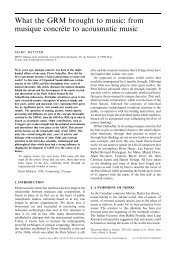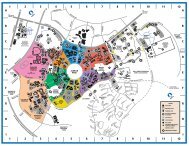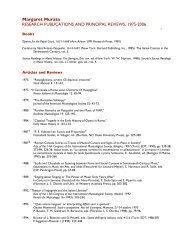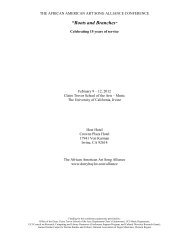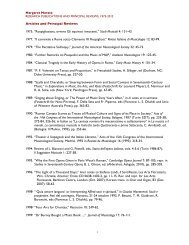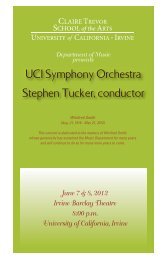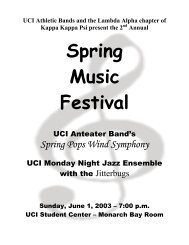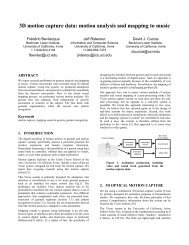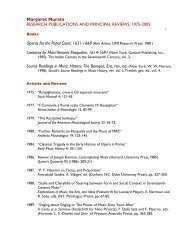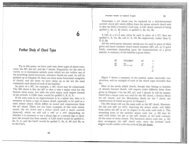Soundcraft Guide to Mixing - Music
Soundcraft Guide to Mixing - Music
Soundcraft Guide to Mixing - Music
- No tags were found...
You also want an ePaper? Increase the reach of your titles
YUMPU automatically turns print PDFs into web optimized ePapers that Google loves.
SECTION 8: Glossary36SIGNALElectrical representation of input such as sound.SIGNAL CHAINThe route taken by a signal from the input <strong>to</strong> a system through <strong>to</strong>its output.SIGNAL-TO-NOISE RATIOAn expression of the difference in level between the audio signaland the background noise of the device or system. Normallyexpressed in decibels.SMPTE (Society of Motion Picture and TelevisionEngineers)Time code developed for the film industry but now extensivelyused in music and recording. SMPTE is a real-time code and isrelated <strong>to</strong> hours, minutes, seconds and film or video frames ratherthan <strong>to</strong> musical tempo.SOLO-IN-PLACEA function that allows the opera<strong>to</strong>r <strong>to</strong> listen <strong>to</strong> a selected channelon it's own but complete with all relevant effects, by au<strong>to</strong>maticallymuting all other inputs.SOUNDCRAFTThe name found on some of the best-value professional audioequipment around.SOUND REINFORCEMENTThe process of amplifying or reinforcing on-stage sound (whetherfrom already-amplified or acoustic instruments/voices) withou<strong>to</strong>verpowering the original sound. Suitable for smaller venues andoften used solely <strong>to</strong> raise the level of the vocals above the back lineand drums.SPL (Sound Pressure Level)Intensity of sound measured in decibels.STEREOTwo channel system feeding left and right speakers <strong>to</strong> create theillusion of a continuous sound field. Stereo: from the Greek wordfor ‘solid’.STEREO RETURNAn input designed <strong>to</strong> receive any stereo line level source such as theoutput of effects or other external processing devices.STRIPETo record time code on<strong>to</strong> one track of a multitrack tape machine.SWEEP EQAn equaliser section (e.g. Midband EQ) which boosts or cuts avariable rather than fixed frequency.TALKBACKA system allowing the opera<strong>to</strong>r <strong>to</strong> speak <strong>to</strong> the artistes or <strong>to</strong> tape viathe auxiliary or group outputs.TAPE RETURNA line level input provided specifically <strong>to</strong> receive the playbackoutput of a tape machine.TRANSIENTAn instantaneous rise in the signal level e.g. a cymbal crash orsimilar.TRIM CONTROLA variable control which gives adjustment of signal level over alimited and predetermined range usually for calibration purposes.TRS JACKSA 3-pole jack with Tip, Ring and Sleeve connection. Sometimesreferred <strong>to</strong> as a stereo or A-gauge jack plug.UNBALANCEDA method of audio connection which uses a single signal wire andthe cable screen as the signal return.This method does not providethe same degree of noise immunity as a BALANCED connection.WETSlang term for a signal with added effects such asREVERBERATION, ECHO, DELAY or CHORUS.Y-LEADA lead split so that one source can feed two destinations. Y-leadsmay also be used in console insert points in which case a stereo jackplug at one end of the lead is split in<strong>to</strong> two mono jacks at theother.2-TRACK RETURNA line level stereo input on a mixing console designed <strong>to</strong> accept theoutput from a 2-Track recording device. May also be used as anadditional effects return, depending on the internal routing of themixer.



